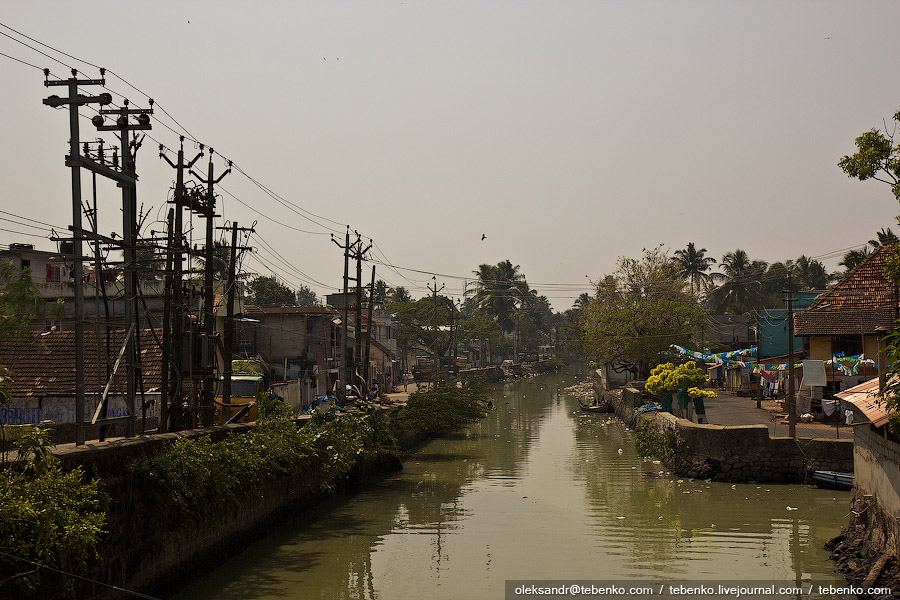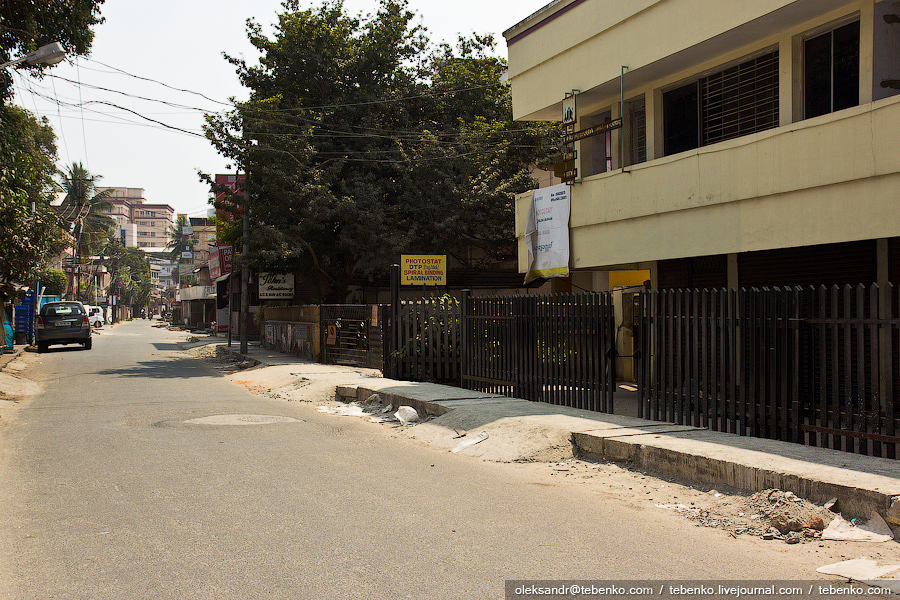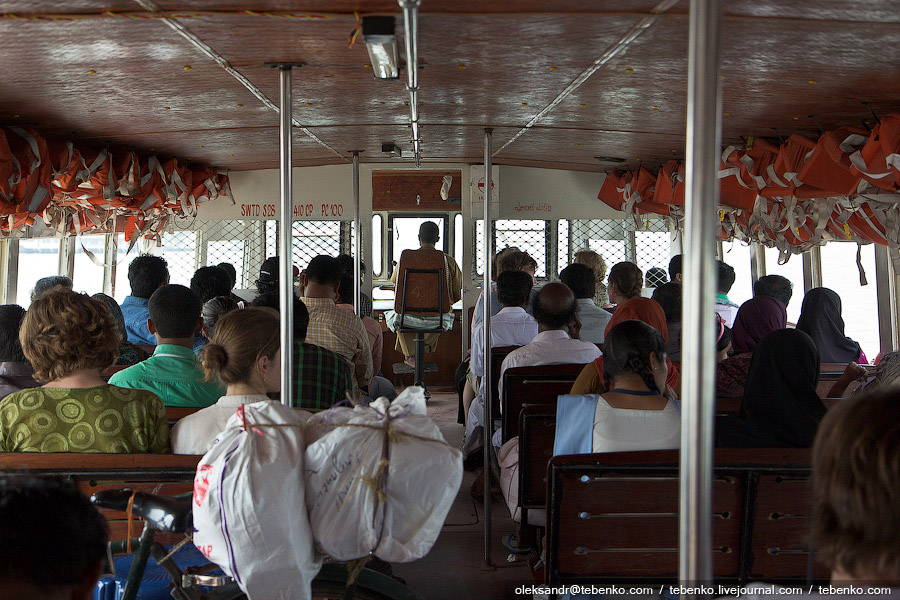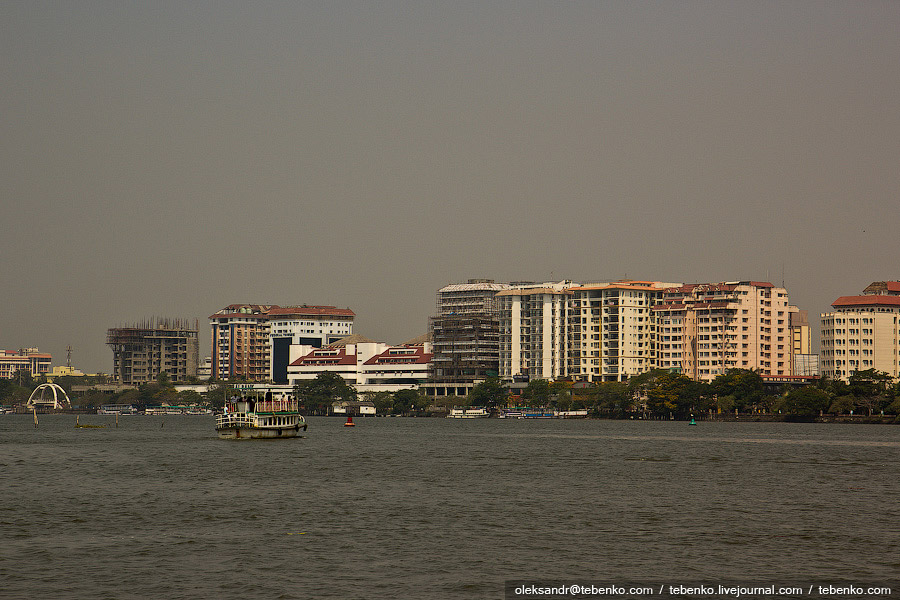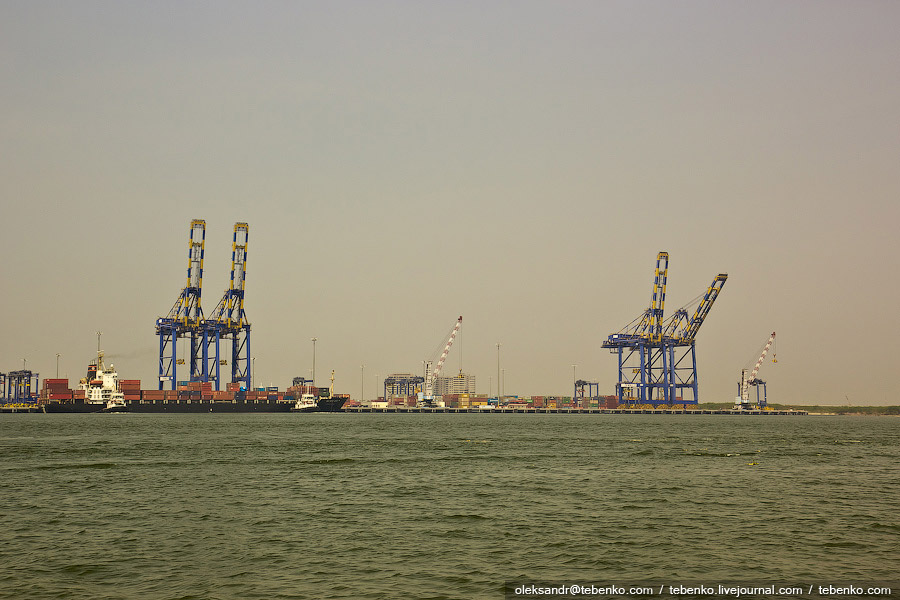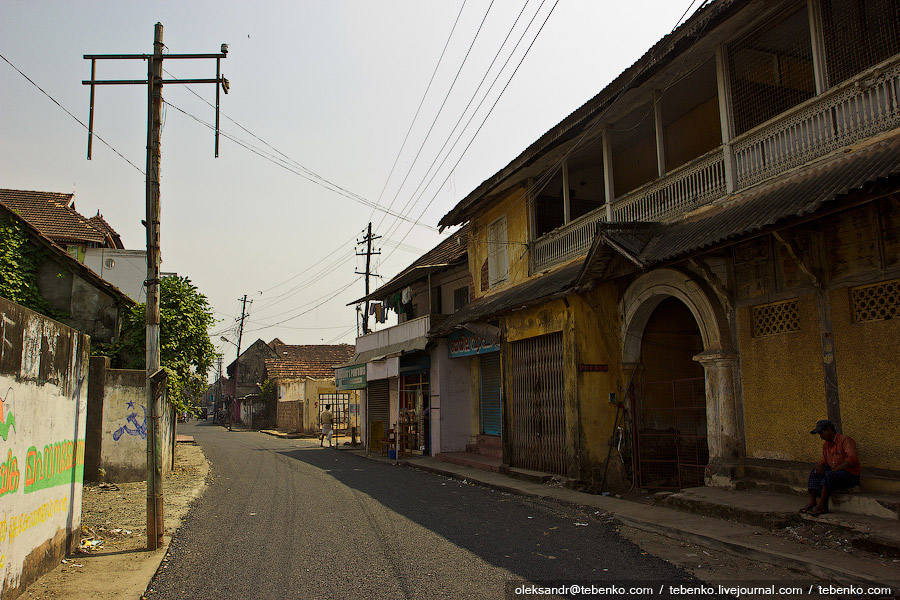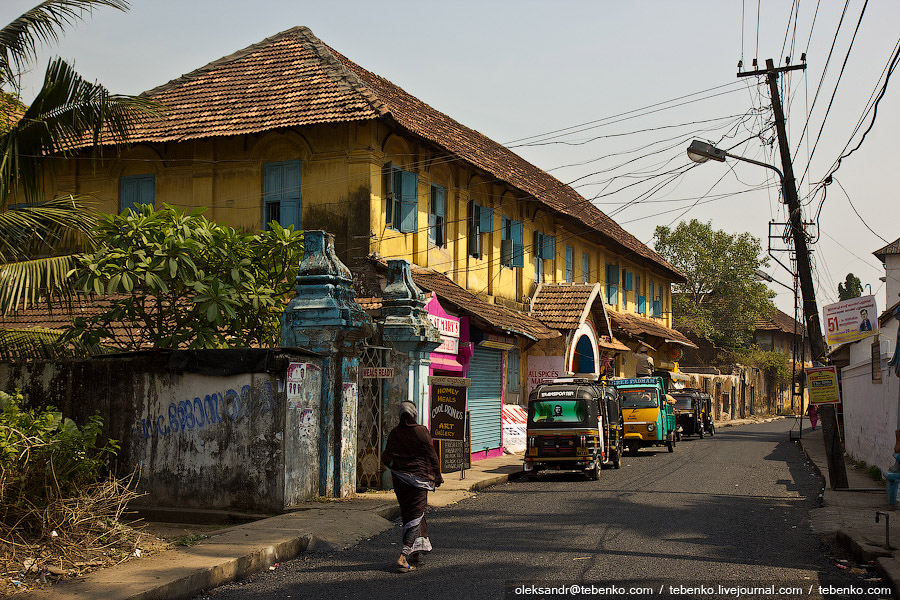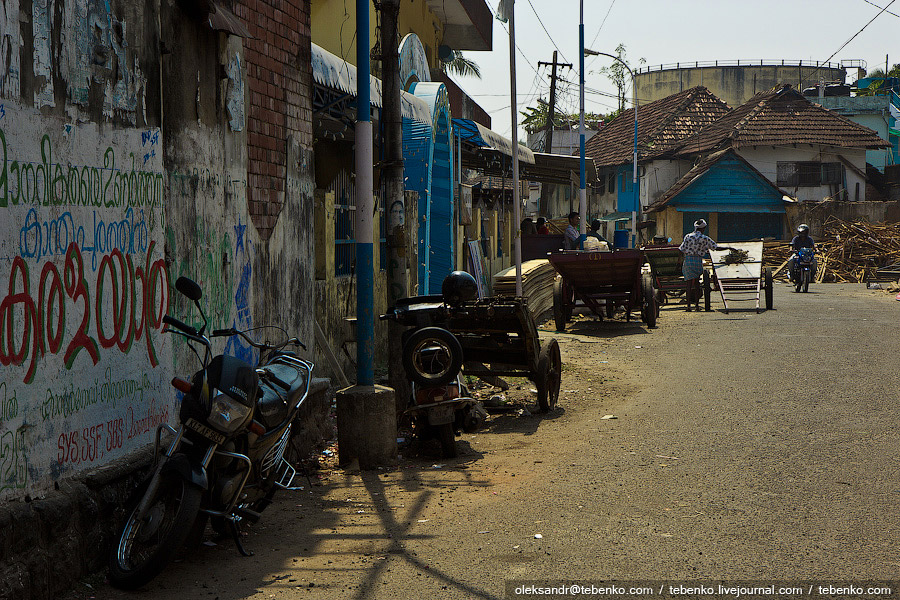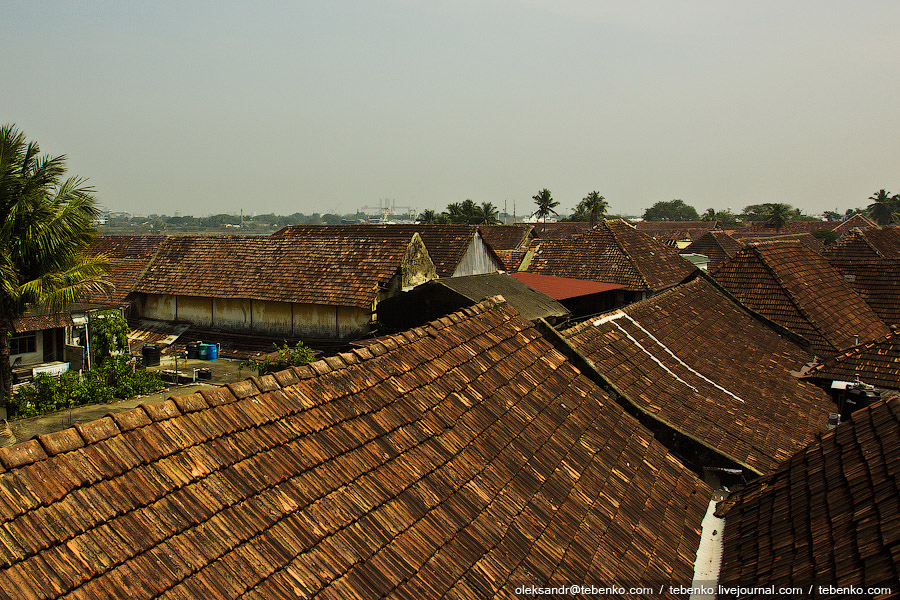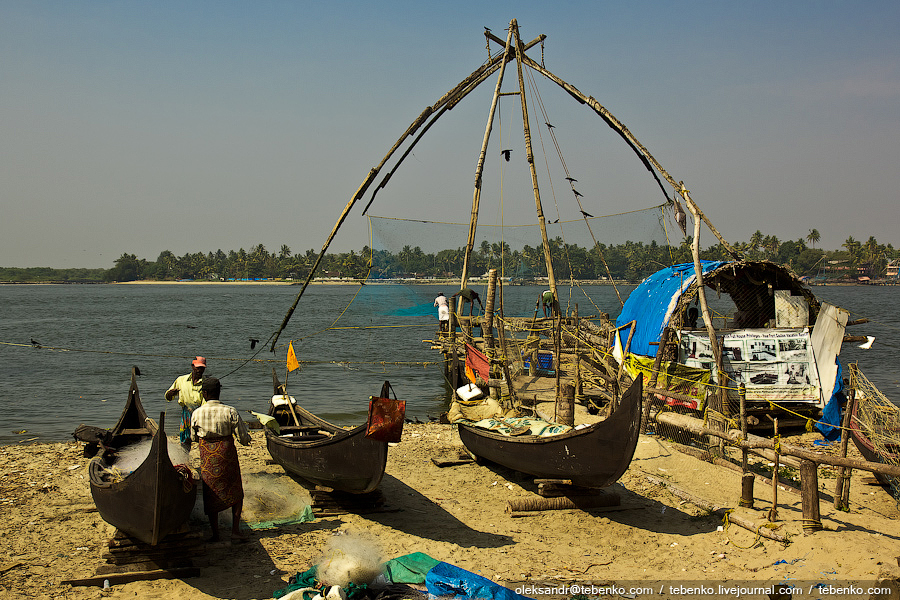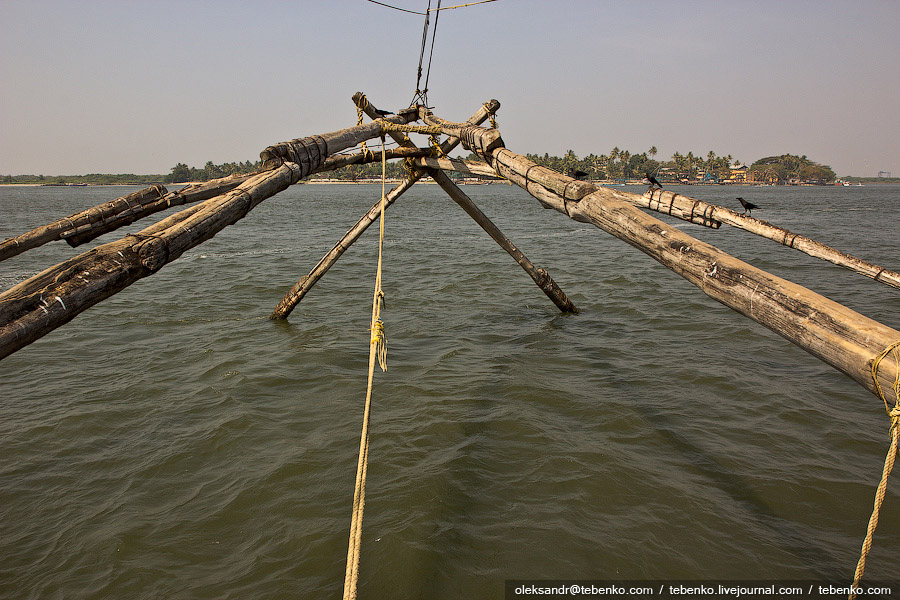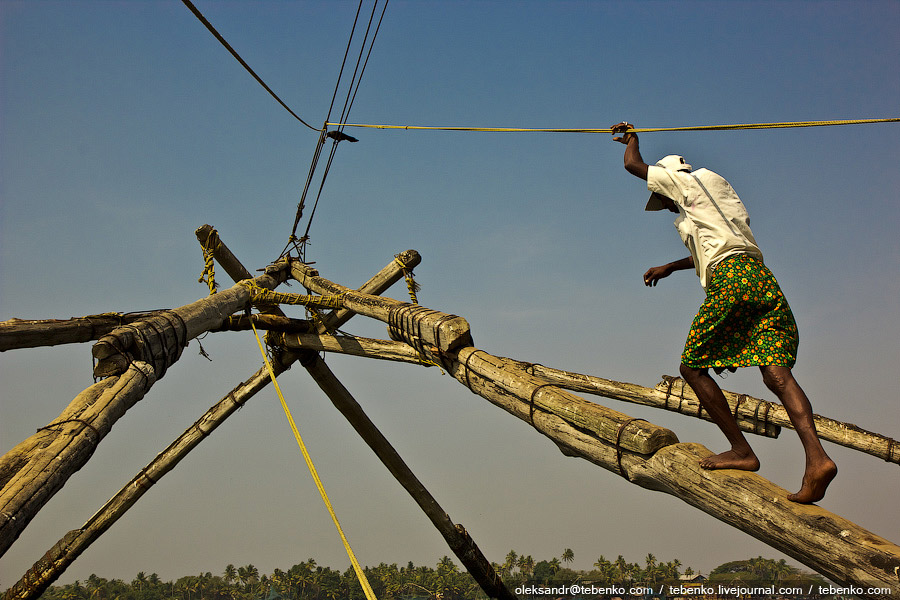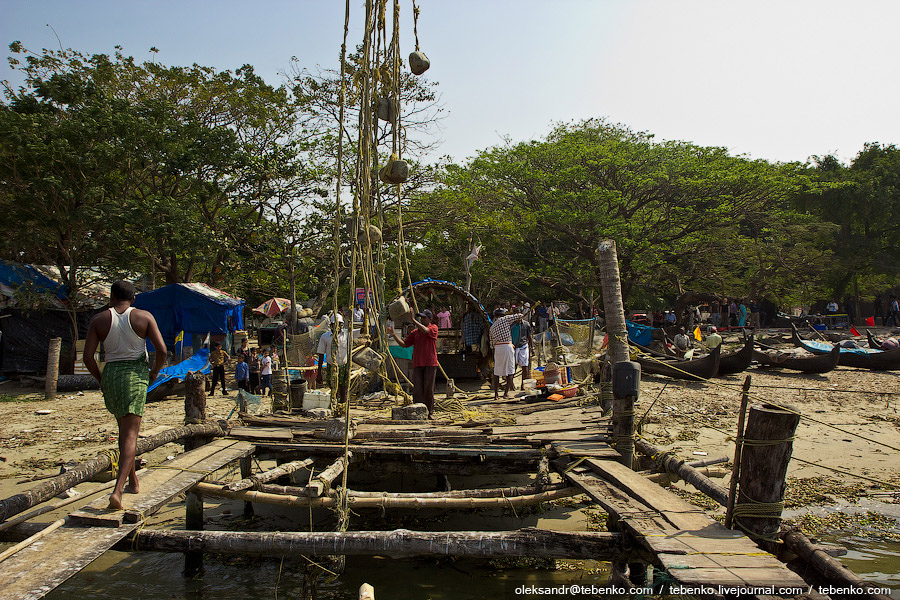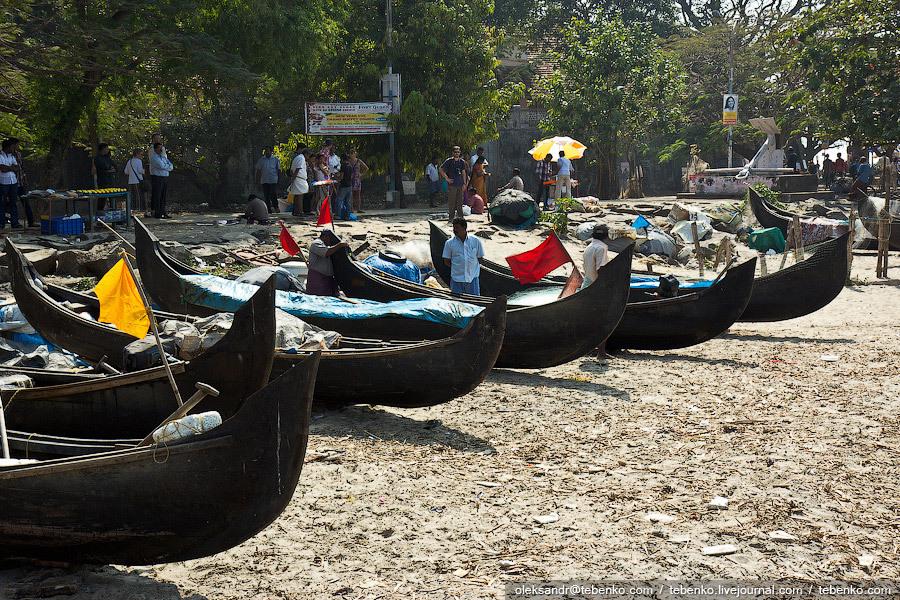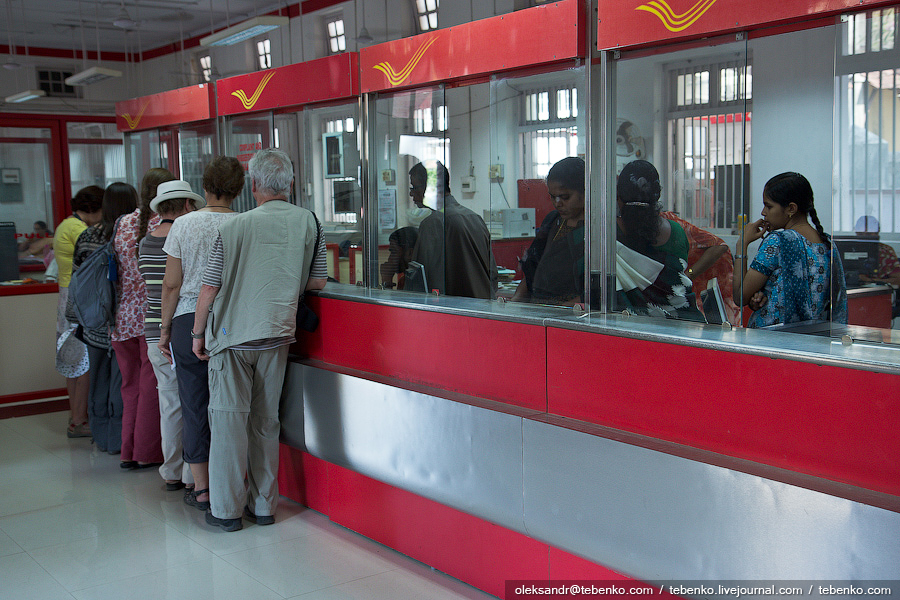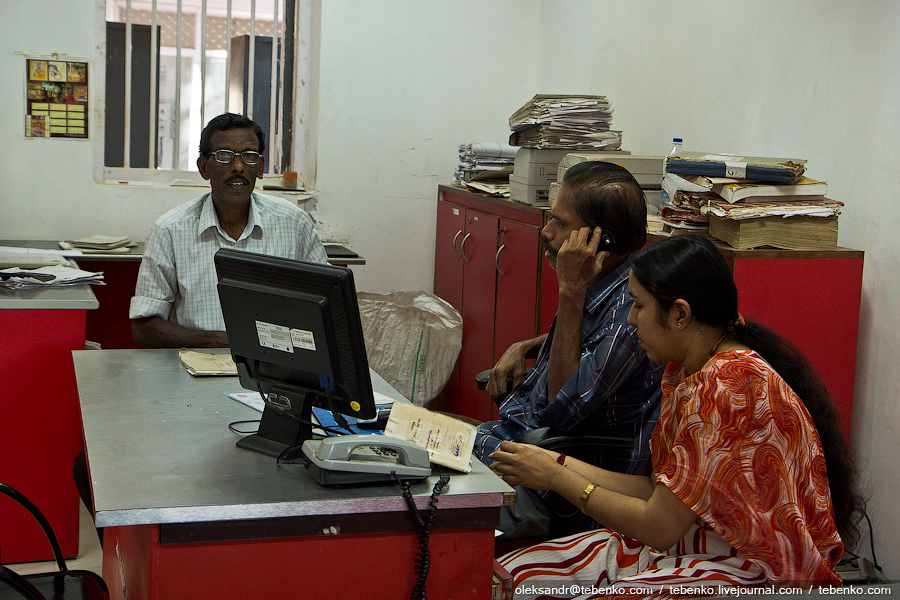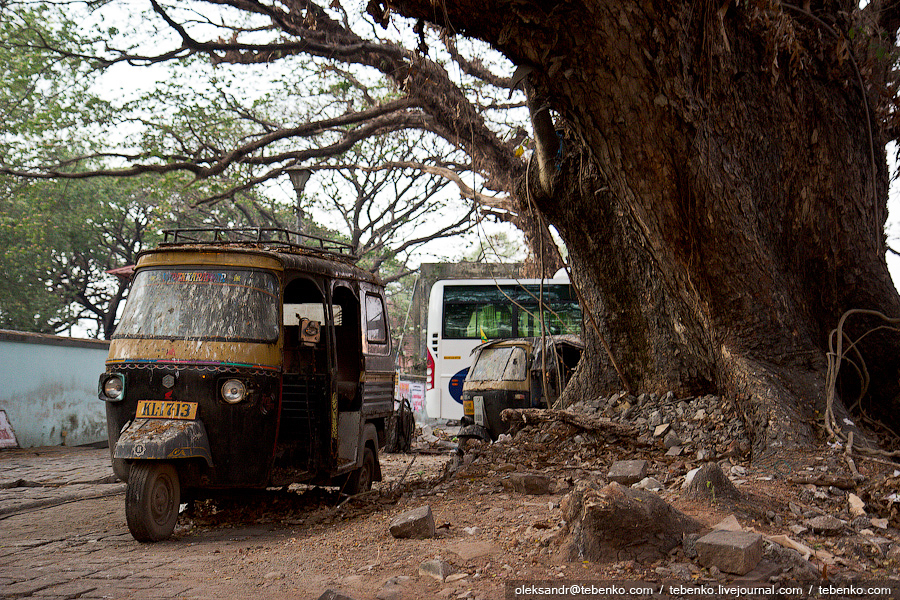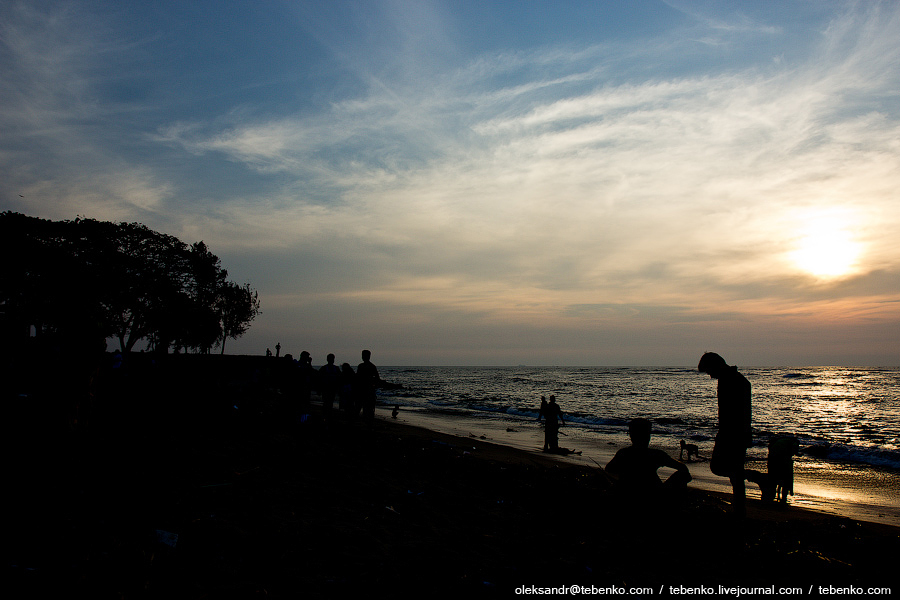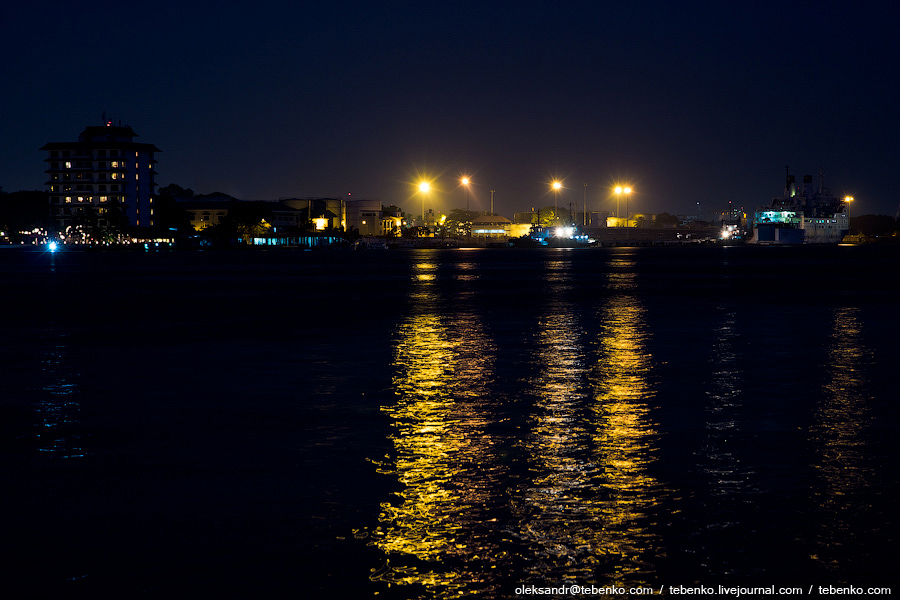To Cochin we arrived at night. Of course, the night immediately go enjoy architectural monuments and views of the city would be pointless. It is absurd and illogical, but had — our organisms stubbornly refused to sleep on an empty stomach, so our squad together pochymchykuvav in search of something edible.
To our surprise the city is not asleep, rather — came not all. At midnight we even met workers who selflessly cleaning sewers. Although it is likely that due to the constant heat (even at night the temperature reached about 28 degrees), they always work at night. Institution found the food and refreshed, we eventually went to rest.
The next morning, with new powers, while at the memory and in sober mind, we set out to explore Cochin — the second city in population in Kerala. Cochin is situated on the shores of the Arabian Sea — or rather, its large harbor, which is called the Vembanad lake. City spread along the coast somewhere with fifty kilometers and consists of the mainland, peninsula, one large island and a group of small islands. Generally, the map of the area is interesting.
Cochin us seemed greener than Delhi. And cars on the streets are also smaller:
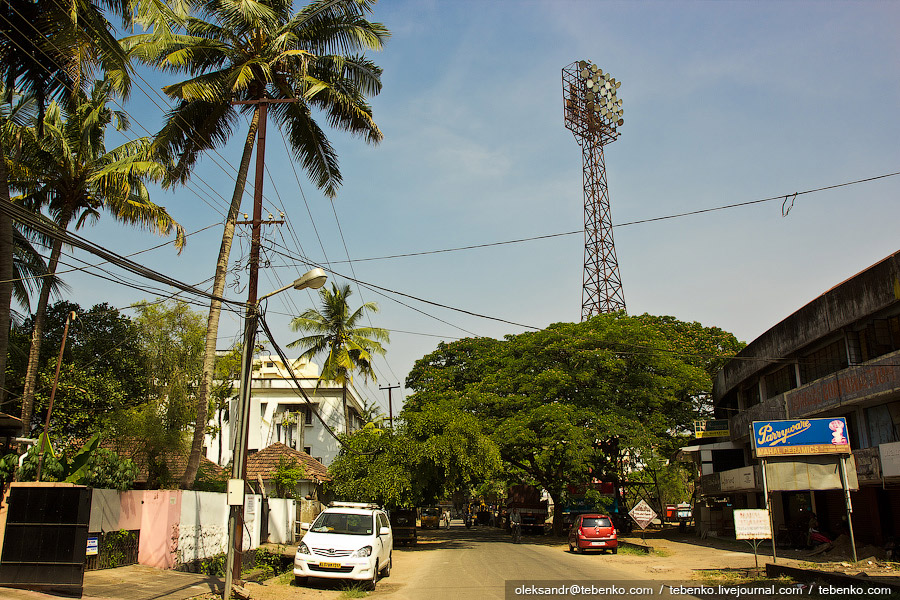 1
1Rickshaws are painted in yellow and black colors, and the streets occasionally occur even municipal employees are engaged in garbage collection. By Indian standards, Cochin be called a clean city. Compared to Delhi, this is no doubt.
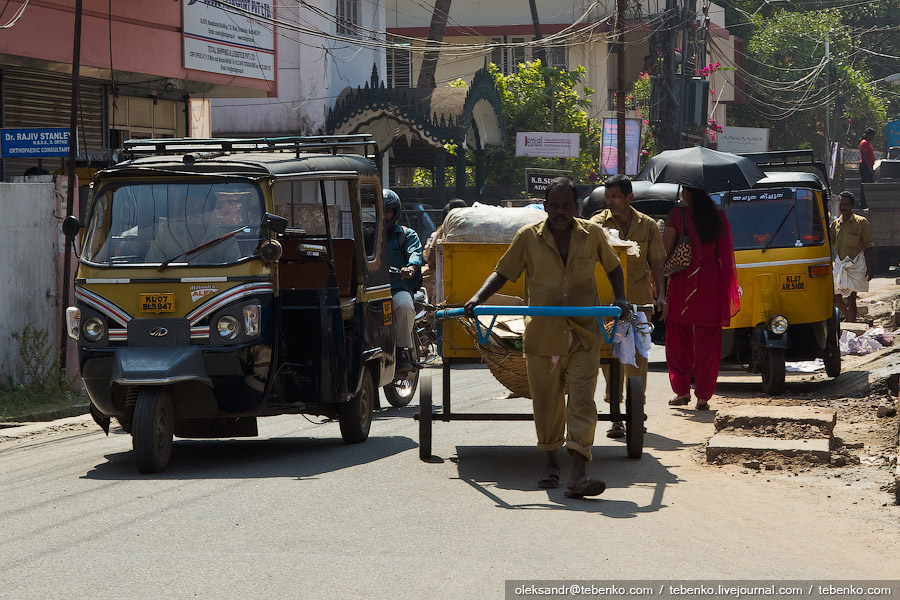 2
2Although Indian and wipers work here in sweat, but the volume of garbage on Indian streets truly endless.
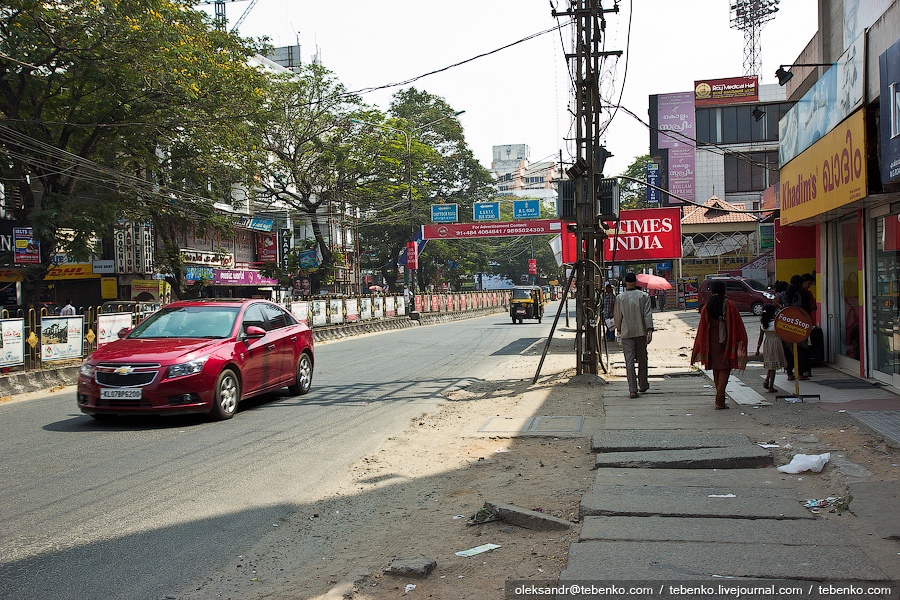 3
3In Cochin we met with authentic Indian sewage system. Its main know-how is the fact that it laid the sky and not using these useless pipe:
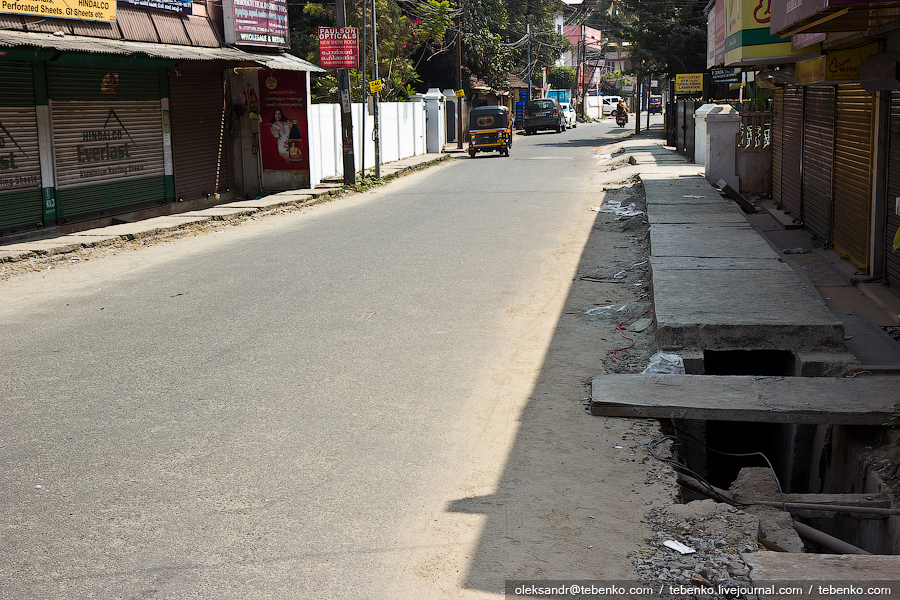 5
5Do not be mislead by the fact that the photo of the closed sewer concrete slabs — is just fragments and only in some parts of the city. In other places you can freely enjoy the sounds of gurgling water and along to enjoy everything that swims in it:
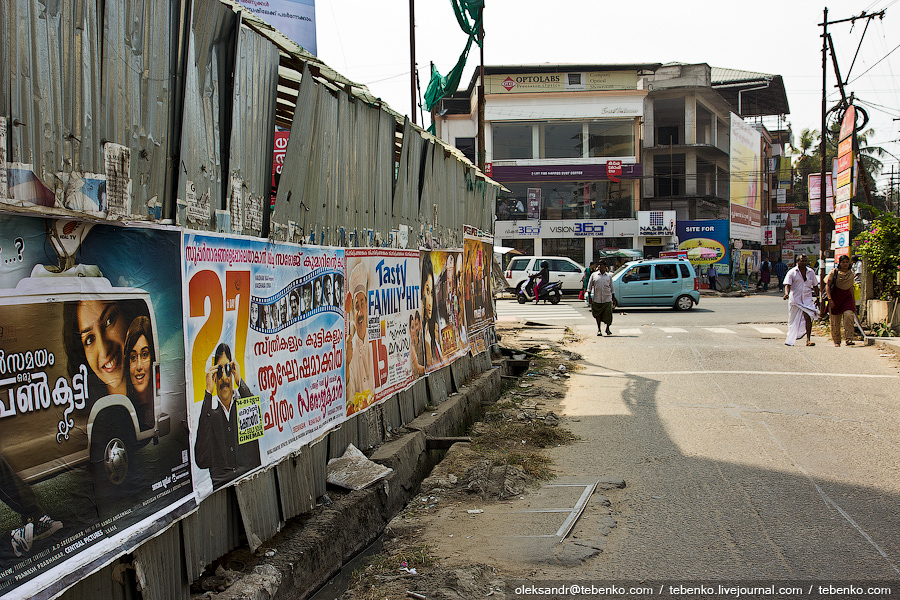 6
6Purified sewage as easy as looks. In the evening, workers inspect channels in terms of contamination, and a variety of subjects and excrement with insufficient turnover that caused the contamination, vyhribayut. Then it all dried in the sun and then transported in an unknown direction:
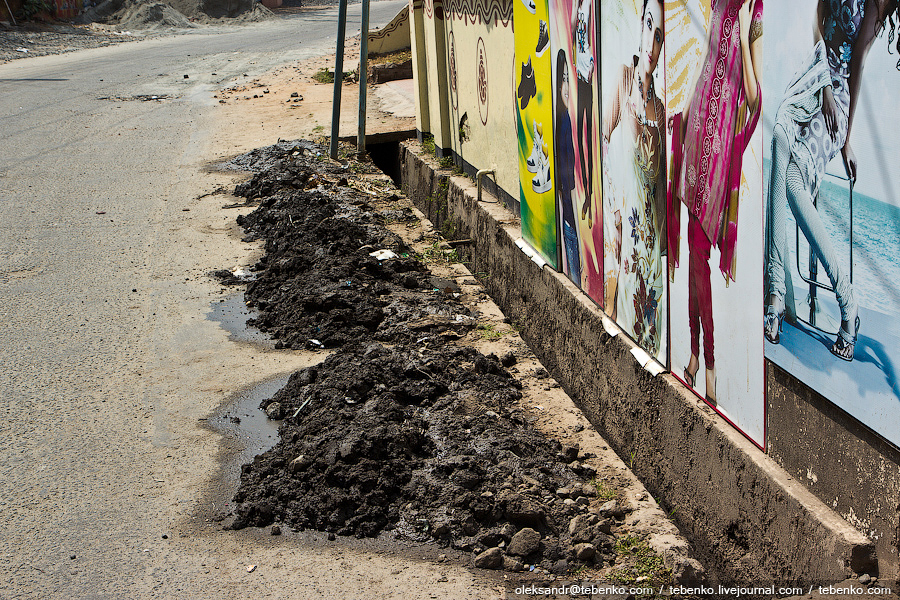 8
8All natural fertilizer with sewage flowing directly into Lake Vembanad. Thus, the local municipal authorities have no problems with aeration and purification stations — simple, practical and most importantly — economically.
Cochin But there are other interesting sights, and the main one, of course, is the Fort. Fort Cochin — is the first settlement of Europeans in India. Fort emerged in the romantic times of seafarers and searches sea route to India. Its founders and first settlers were the Portuguese. At one time there was even buried Vasco da Gama. Later his hands to the development of the area made the Dutch and the British.
The easiest and cheapest way to get to Fort — use waterways for this go to the port to buy tickets for the river tram. Tolls symbolic — just a few rupees. The captain and crew are in the public service, and ships — in state ownership. Private carriers we have not met.
Note the cash, such manifestations of gender segregation we have not met: boys — to the left, and girls — to the right. Incidentally, the big red sign warned that spitting is prohibited:
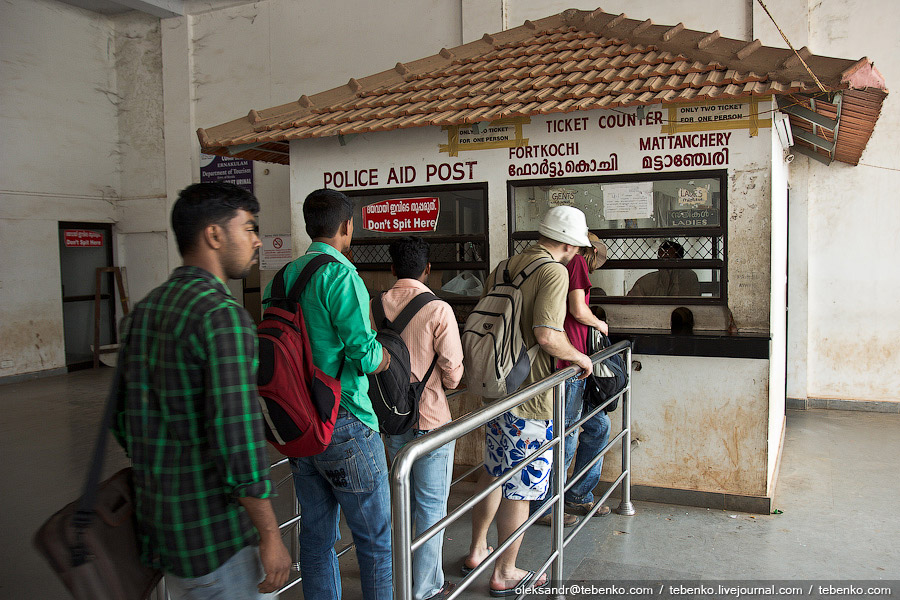 9
9The captain always strict and closely monitoring the situation on the water, going round the buoys, potholes, and other fishing boats:
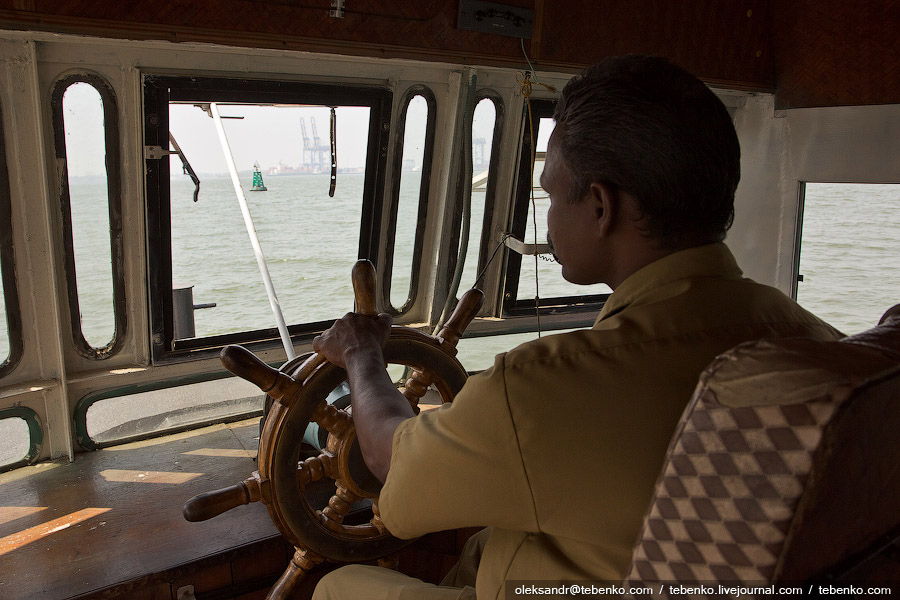 11
11Another important person on board — minder responsible for the engine. Just like in the movies: the captain gives the command "Full ahead" and mechanic pulls the switch. The teams submitted via the call that is attached to the rope at the other end it is the captain. The same technical know-how can be seen in Indian buses.
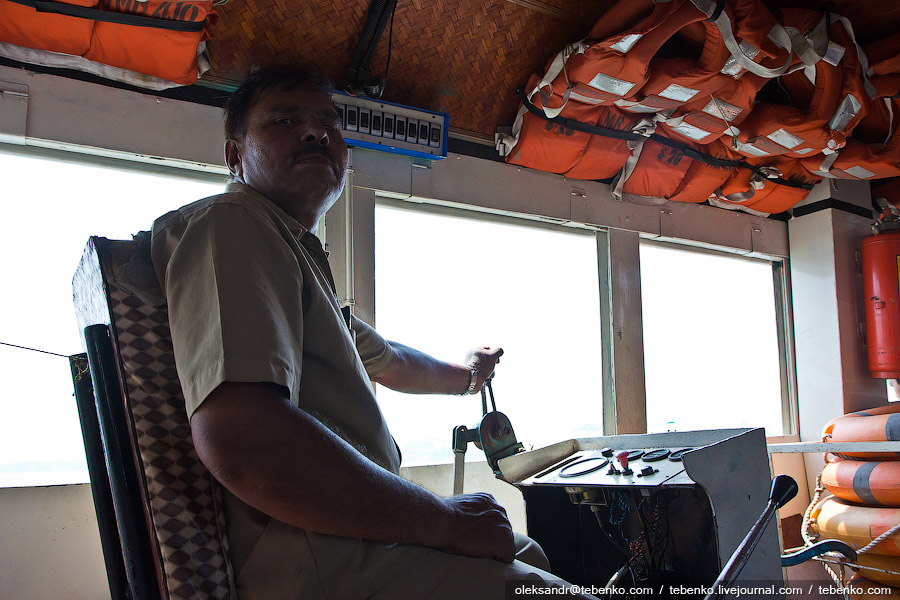 12
12Most part minder required only when sailing and mooring, all other time — is the most calm and respected profession in the world:
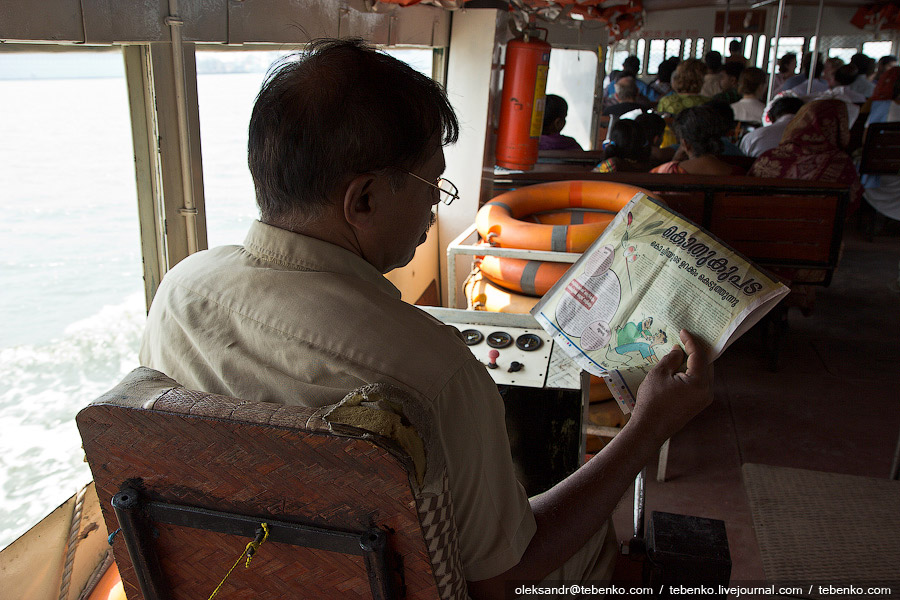 13
13Another notable and impressive landmark can be called a giant (up to 20m wide) fishing nets, which are called Chinese. Locals claim that they introduced Chinese who came to Kerala in the XIV-th century. Chinese Search grid is easy — it's the first thing you'll get to the Fort.
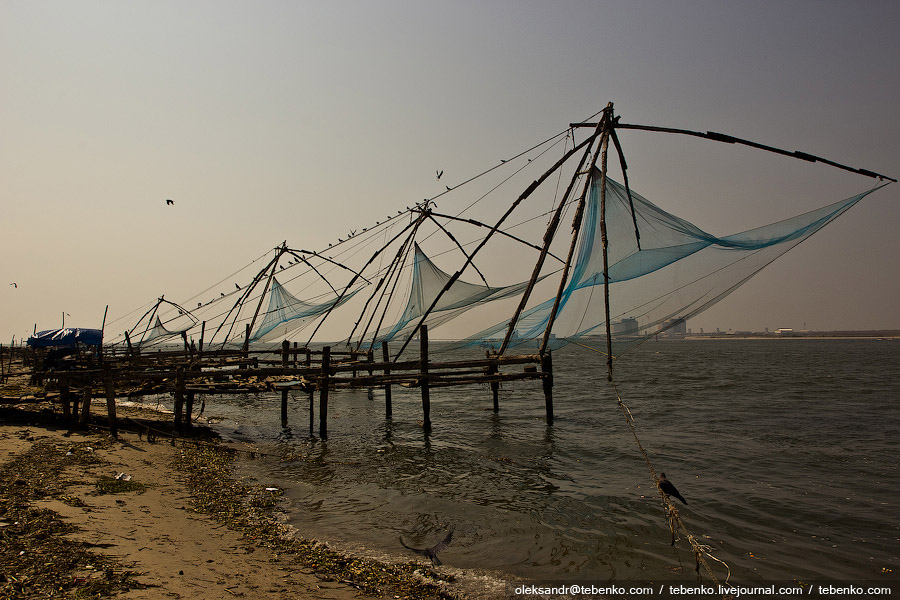 20
20Catching principle is simple: at high tide grid is immersed in water and at low tide — raising the water with all the living creatures that go zaplyvla.
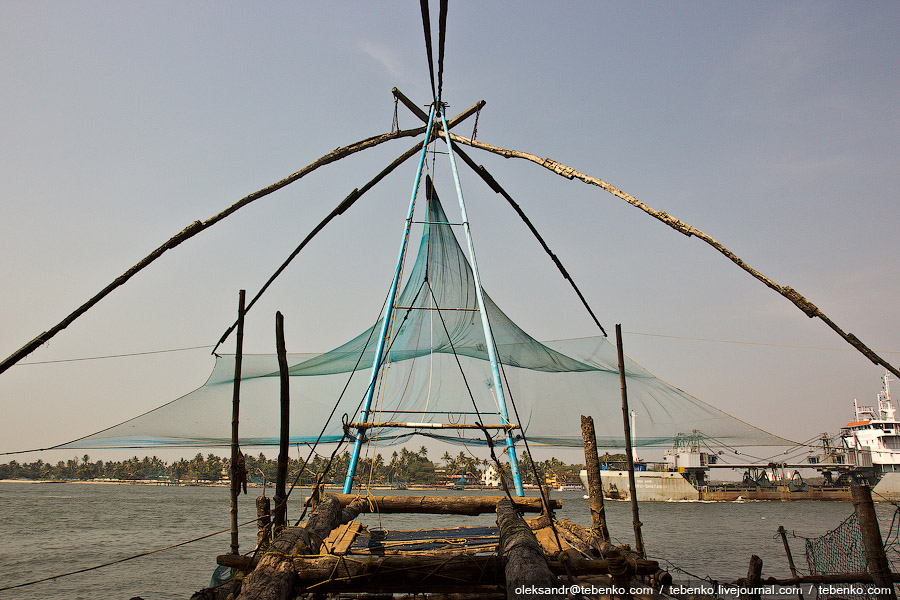 21
21Usually, the crew consists of fishermen and 5 persons. Most importantly you can identify the availability of the mobile phone.
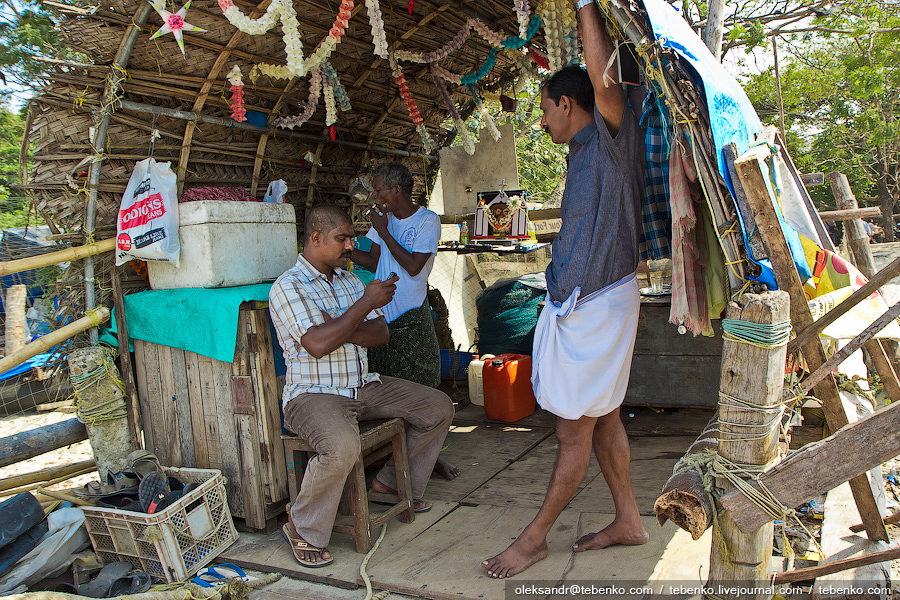 23
23The bulk of the business is done. Now we must wait and in the meantime you can smoke and even tan:
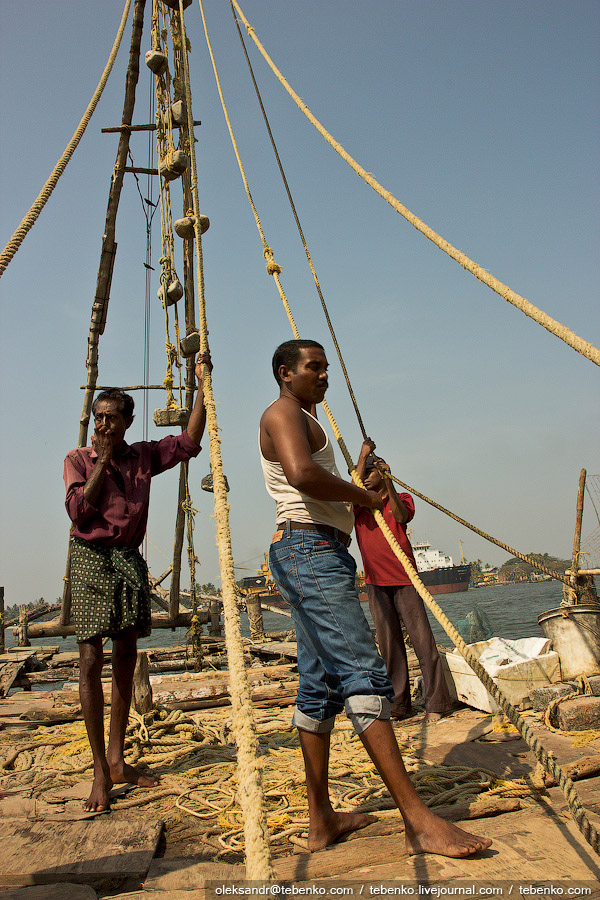 26
26This process of fishing ends left only choose it from the grid. For this you need a net and two Indians:
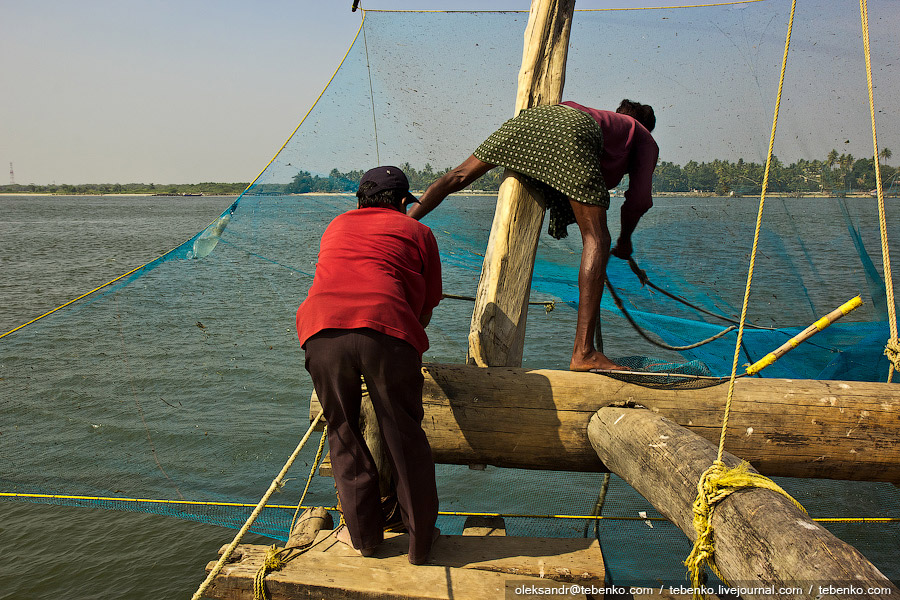 28
28Returning from the Fort, we found that we have gone one phone, so I had to go in search of a new vehicle and sevens. With the decision of the first task arose, but the place at night SIM card proved a little problematic. Sevens something like sell, but they can be activated only during working hours.
On the way to the base we accidentally wandered for some Indian concert. It turns out that something like them is every weekend, all on a voluntary basis:
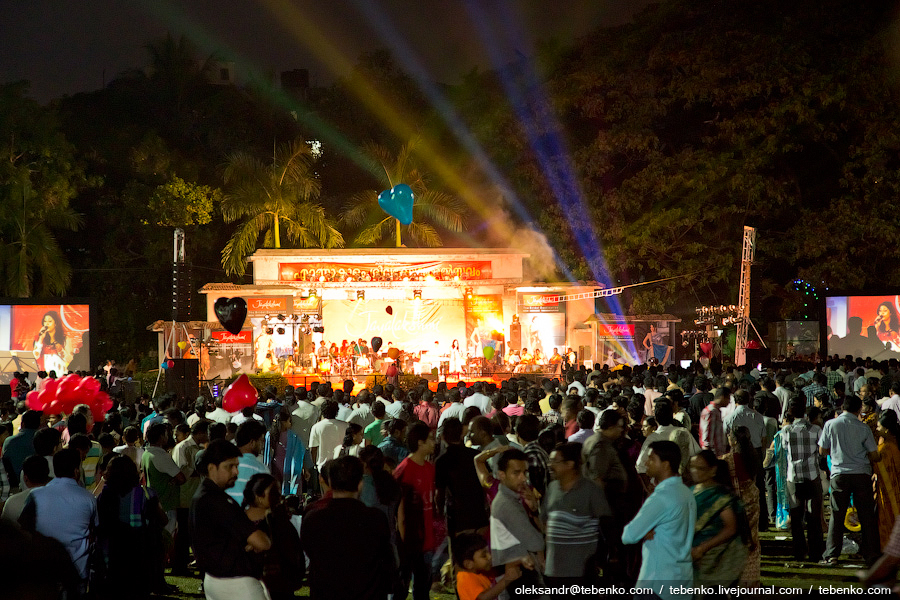 37
37The next morning we bought tickets for the bus and went to conquer the mountain covered with tea bushes Ghat.
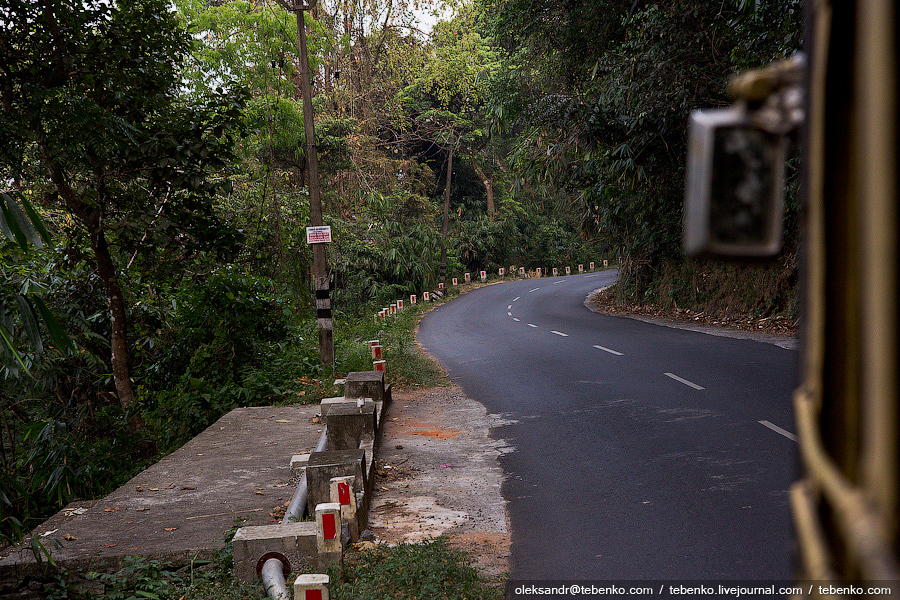 39
39In the next issue, read about the famous Indian tea plantations and the life keralskyh mountaineers.

